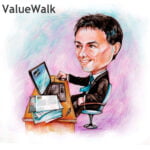by Nick Tompras ACR Alpine Capital Research – see full PDF below
Today’s equity market valuations have reached levels not seen since early 1998, when the S&P 500 broke 1,000 for the first time. At a price 30x higher than cyclically-adjusted earnings, yours truly opined at the time that the market was highly overvalued. Unaware of my sentiments, the index jumped 50% over the next two years to over 1,500. A melt-up for the ages.
Valuation gravity finally intervened, as it always seems to do. With no prompting by any explicit event, other than, perhaps, drunken investors finally coming to their senses, high-priced stocks began to decline in the second quarter of 2000. The S&P 500 eventually slid below 800 by early 2003.
The upshot is that one could have bought the market over 20% cheaper in 2003 than in 1998. Yet those who avoided high-priced stocks in 1998 were forced to incur the pain of looking foolish for a few years. Value-oriented investors must be impervious to such pain. That brings us to today.
The market is again at a valuation extreme – the only times US stock prices were higher were in 1929 and 1998-2000. The market value of the S&P 500 is nearly 30x higher than cyclically adjusted earnings today. 1 The following chart highlights past valuation extremes.
A comparison of the periods after 1929 and 1999 reveals that the US economy has been remarkably durable in the long-term, despite catastrophic historical events. When estimating long-term equity market returns, US economic growth is more like a constant than an unreliable variable. It may be natural to assume that the periods after 1929 and 1999 would be very different for the US economy. That is only half true.
The US economy grew year-over-year during the 2001 recession, which only lasted two quarters. The economic and human suffering during the Great Depression was incomparably worse. The surprise is that long-term economic growth was a bit worse in the 16 years after 2000 than the 16 years after 1930. Remarkably, the economy picked up along the same trend-line in the late 1940s where it left off in 1930, as if the Great Depression and World War II, the most historic events of the twentieth century, had never happened. The following chart illustrates this phenomenon.
The US economy has proven resilient in the long-term – the relevant period for determining fundamental corporate valuations. ACR assumes a modest long-term economic growth rate in the terminal phase of our equity valuations. We do not revise our long-term estimates higher when things seem better, nor reduce them when prognosticators turn pessimistic. Importantly, there is no historical precedent for making large shifts in long-term economic growth assumptions when estimating future equity market returns.
Valuation is critical to understanding long-term equity market returns. Today’s high valuations have historically implied low future market returns. The correlation between valuation and future long-term equity market returns is high. The following chart shows the relationship between beginning P/E ratios and subsequent ten year total returns net of inflation.
The correct conclusion from our little history lesson is that the valuation peaks in 1929, 1999, and today can present challenges for investors seeking satisfactory absolute returns from the market. The reason is not that economic calamity may be just around the corner. The reason is that high values are equivalent to low returns. So how will these likely low returns play out?
A steady drip of low single-digit annual total returns is unlikely. Equities have never produced steady total returns. Equity markets are likely to turn volatile again someday. The timing, magnitude and duration of the market’s future undulations are anyone’s guess. The catalysts for future volatility are also unknown. It could be an unpredictable change in market psychology, a geopolitical event which no one sees coming, or a recession.
A recession by its nature always sets off an unsettling dynamic in the marketplace. Output declines, unemployment increases, and earnings plummet. The depth and duration of a recession are always unknown. Therefore, investors are uncertain when earnings will rebound, or what the “new” level of earnings ought to be. Since earnings are what support equity prices, equity market volatility spikes. Then one day, the skies of recession clear, and the financial markets lurch higher in relief.
Recession or not, a contraction in the current P/E ratio is a major risk. While there is no economic law which states that P/E multiples must return to some historical average, the risk that they could is indisputable. A return to the historical average of 17x earnings would produce an equity market decline of 41.1% today.2 Furthermore, there is always the risk that prices could decline below their historical average. But we won’t go there; it would be too macabre. Suffice it to say that ACR’s foremost objective is to protect investors from the impairment of their capital due to low quality assets or excessively high prices.
ACR is prepared for volatility. We believe our ample cash reserves and out-of-favor investments will serve us well, even though they are holding us back today. Volatility does not have to strike the entire market. All we need is volatility in a small group of securities. The ACR investment team does not wake up one day and profess prices are too high. Our cash has built up over the past several years as we have found more to sell than to buy, one security at a time. To us the concept is not strange that there may be periods in market history when one ought to be selling more than buying, or vice versa.
Despite high prices, we can still find the occasional bargain. After selling twelve holdings and purchasing only seven in our EQR strategy from 2012-2014, we purchased six and sold four from 2015-2016. Though we sold two more holdings in EQR earlier this year, we are evaluating several holdings for purchase in EQR and several more in our other strategies.
A valid concern is whether we have been too conservative. Are we missing out on gains when the getting is good? Our cash reserves have no doubt been holding us back. In the meantime, anyone could have tracked the market higher over the past several years. The real trick, however, will be holding onto those gains. Markets have a way of turning heroes into goats, and goats into heroes, all in the space of a few years. The lion’s share of market gains in the past few years in our view are likely to prove speculative; they are not supported by underlying intrinsic value growth and are at risk of reversal.
ACR estimates the fundamental return drag on our equity portfolio from holding cash over the past five years to be 1.7% per year. We believe this drag is a low price to pay for the protection and opportunity we are likely to receive in return. The real gains we estimate to have missed consist of the corporate income we would have earned by holding a basket of equity investments rather than cash. Fundamentally, corporate income produces two benefits for shareholders: cash dividends and per-share business growth. The fundamental return can therefore be properly estimated as the dividend yield plus the growth in cyclically-adjusted per-share earnings. The S&P 500 fundamental return since 2012 was 5.5% per year and our average cash balance was 31%, which equates to portfolio return drag of 1.7%.3 One could view this as a “premium” for protection.
The other benefit of our cash in addition to protection is “optionality” – the potential to earn a higher return by patiently waiting for the right price. Holding cash allows us to purchase securities at any time in the future, which is in effect an “option” to buy. In 1998, we could have held cash for five years, rather than invest in over-priced stocks, and saved (or earned) 20% by waiting until 2003.4 We do not, however, attempt to “play the market” this way. It is very difficult to do.
The beauty of investing in individual securities is that we have literally thousands of fluctuating prices which may be compared to asset values and purchased cheaper in the future. We are not relegated to just one option, the stock market, attempting to time its sole valuation extremes. The benefit of looking for value in a large market and only investing in a limited group of securities allowed us to be fully invested at the equity market peak in 2000. Even though the S&P 500 was at an all-time high, there were enough cheap securities to form a full portfolio.
Today is different. Under our valuation framework we cannot find enough cheap securities and are therefore driven to hold cash. Just as in 1998, we do not know how much longer the so-called “Trump Bump” will last. Given the proportions, we believe “melt-up” is a more apt description of recent market movements. We do know that today’s pattern is very familiar, and history strongly implies it does not end well for owners of high-priced securities. ACR is determined to be sitting comfortably in a chair of protection and opportunity when the music stops.
April 2017
See the full PDF below.












